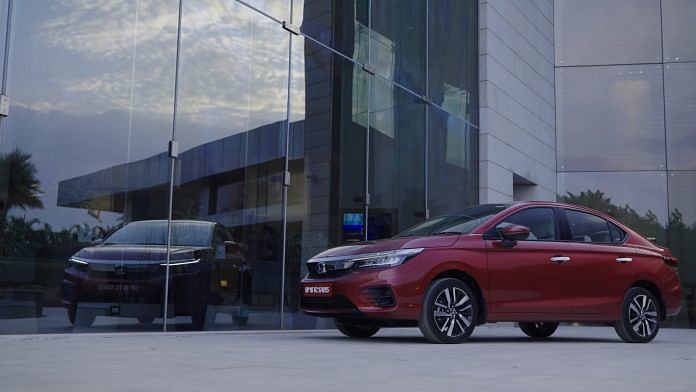Picture this scene: You are driving at 20 kmph in a crowded market street somewhere in India. It is a maelstrom of chaos around you, with cyclists, scooterists, pedestrians and street vendors all vying for precious roadside real estate. Suddenly, one of them appears in front of your car. While there is a margin for you to brake enough so that the said pedestrian can move along quickly, there is this screeching noise as the vehicle applies maximum brakes, with alarms beeping away inside the cabin.
When I said brakes, I meant car brakes, not you, the driver. This is because the car in question has automatic braking. Or, as carmakers euphemistically say, ‘Forward Collision Avoidance’. A similar incident happened to me a few days ago while driving a Mercedes-Benz C300d in Uttar Pradesh’s Kanpur. The streets were packed full, and, as one must, I was paying extreme attention. Personally, I did not believe I could strike a pedestrian. But the car thought otherwise. Fortunately, the four-wheeler behind me did not smash into the Merc, but only just.
Welcome to the world of automatic braking, another layer to the increasing automation of cars: From automatic headlights, which are genuinely useful, to self-adjusting high beams and wipers that sense rain on the windshield. Automatic braking, though, is part of ‘Advanced Driver Assistance Systems’ (ADAS). While I’ve written on the subject before, they are now becoming increasingly popular on modern vehicles available in India. Not just the Mercedes-Benz C300d, even the Hyundai Tucson I have with me currently has ADAS. In 2023, ADAS will probably feature in more vehicles, but right now, the most affordable car with ADAS is the Honda City e: HEV Hybrid.
Also read: On Indian roads, it will be a Happy EV Year 2023 — Tata to Mahindra to China’s BYD
Why automatic braking doesn’t work for India
ADAS features can prove helpful in certain circumstances, such as radar-assisted cruise control that maintains a safe distance from the vehicle ahead. Or even ‘Lane Keeping Assist System (LKAS)’, which gently nudges you back into your lane and is nothing short of a boon on some of India’s latest expressways. But I do have a bone to pick with automatic braking, which only works properly at lower speeds inside cities. I am not convinced it works for most Indian cities. At least not right now.
Make no mistake; there is a use case for automatic braking. Imagine driving inside a locality and a child suddenly runs across the road chasing a ball while you were not paying the requisite attention. In today’s day and age, where smartphones are all around us, we can all get distracted fairly quickly—from bad jokes on WhatsApp to the latest trends on Twitter. While automatic braking has many benefits, how the car brakes when the system activates is really hard. And in certain conditions—like when you are in a convoy or inside a market area—switching the system off is better than using it. If you are paying attention, that is.
However, that is easier said than done. To be fair to Honda, on the City e:HEV, the carmaker has provided a single button to disable ADAS features. With most other cars, you have to delve deep into the vehicle menu items to switch off the system. And to ensure that it is not that easy for you, you must do this every time you start the car. While every carmaker has a warning screen to urge drivers to pay attention, there is no warning that comes with ADAS equipped vehicles.
Also read: There’s a little bit of India in cars around the world today. It’s in the codes that run them
Warning labels a must
I honestly feel that a big warning message should come with cars boasting automatic braking systems. Despite knowing that the new Mercedes-Benz C-Class had this feature, it came as quite the shock when it activated. Now, imagine if the representative at the dealership told you all about this feature when you set out to buy the car, but you forgot to tell your driver—the person who actually drives the vehicle—about such a system. What would happen then? Seriously, if someone like me, who changes cars with alarming frequency and keeps up to date with all the latest features, can forget, it is quite possible that an average car owner or driver might forget too— even if the carmaker advertises ADAS features prominently.
I do not believe autonomous driving is close to becoming a reality. Not beyond very particular use cases, at least. But such ADAS features will increasingly come onboard cars. It is only a matter of time before hatchbacks come equipped with advanced radar systems: Yes, automatic braking users’ radar! And to the perpetually distracted, there is a very good use case for ADAS. But I’m just requesting that the auto industry flash a big, red warning on cars with these features.
@kushanmitra is an automotive journalist based in New Delhi. Views are personal.
(Edited by Zoya Bhatti)



